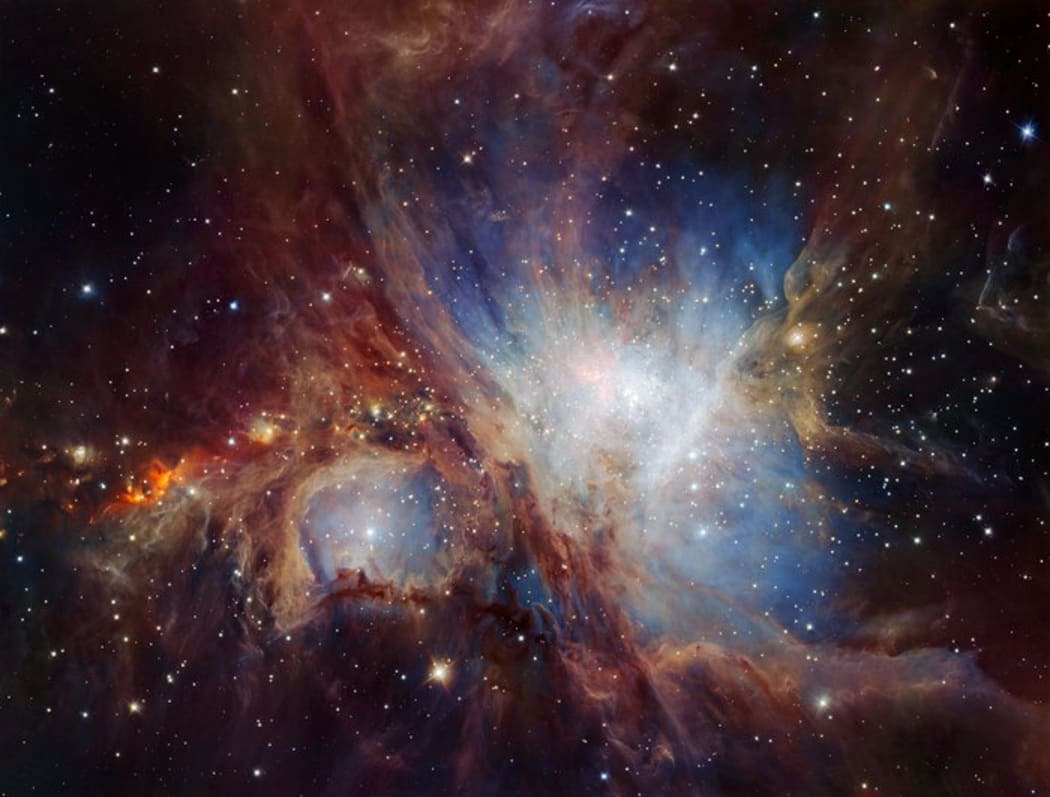A powerful telescope in Chile has been used to peer deeper into the heart of the Orion Nebula than ever before, raising the prospect of finding Earth-sized planets.

This image of the Orion Nebula star-formation region was obtained from multiple exposures using the HAWK-I infrared camera on ESO's Very Large Telescope in Chile. This is the deepest view ever of this region and reveals more very faint planetary-mass objects than expected. Photo: ESO / H. Drass et al.
An international team used the power of the HAWK-I infrared instrument on the the European Southern Observatory's Very Large Telescope to produce the most comprehensive view so far of the system.
The dramatic images it has produced reveal about ten times as many brown dwarfs and isolated planetary-mass objects than were previously known.
Their presence provides an insight into star formation in the nebula, whose relative proximity to Earth makes it ideal to observe, to try to understand the process and history of how stars are created.
"Our result feels to me like a glimpse into a new era of planet and star formation science," said lead scientist Holger Drass of the Astronomisches Institut at Ruhr-Universität Bochum, in Germany.
The observations also hint that the number of planet-sized objects might be far greater than previously thought. The technology to readily observe these does not yet exist, and ESO's future European Extremely Large Telescope, scheduled to begin operations in 2024, is designed to pursue this.
"The huge number of free-floating planets at our current observational limit is giving me hope that we will discover a wealth of smaller Earth-sized planets with the E-ELT," said Mr Drass.
The Orion Nebula spans about 24 light years within the constellation of Orion, and is visible from Earth with the naked eye as a fuzzy patch in Orion's sword.
Ultraviolet radiation from the many hot stars born within the nebula illuminates it as the gas is ionised and glows brightly.
Astronomers count up how many objects of different masses form in regions like the Orion Nebula to try to understand the star-formation process.
Before this research the greatest number of objects were found with masses of about one quarter that of our Sun.
This new image has caused excitement because it reveals a unexpected wealth of very-low-mass objects, which in turn suggests that the Orion Nebula may be forming proportionally far more low-mass objects than closer and less active star formation regions.

